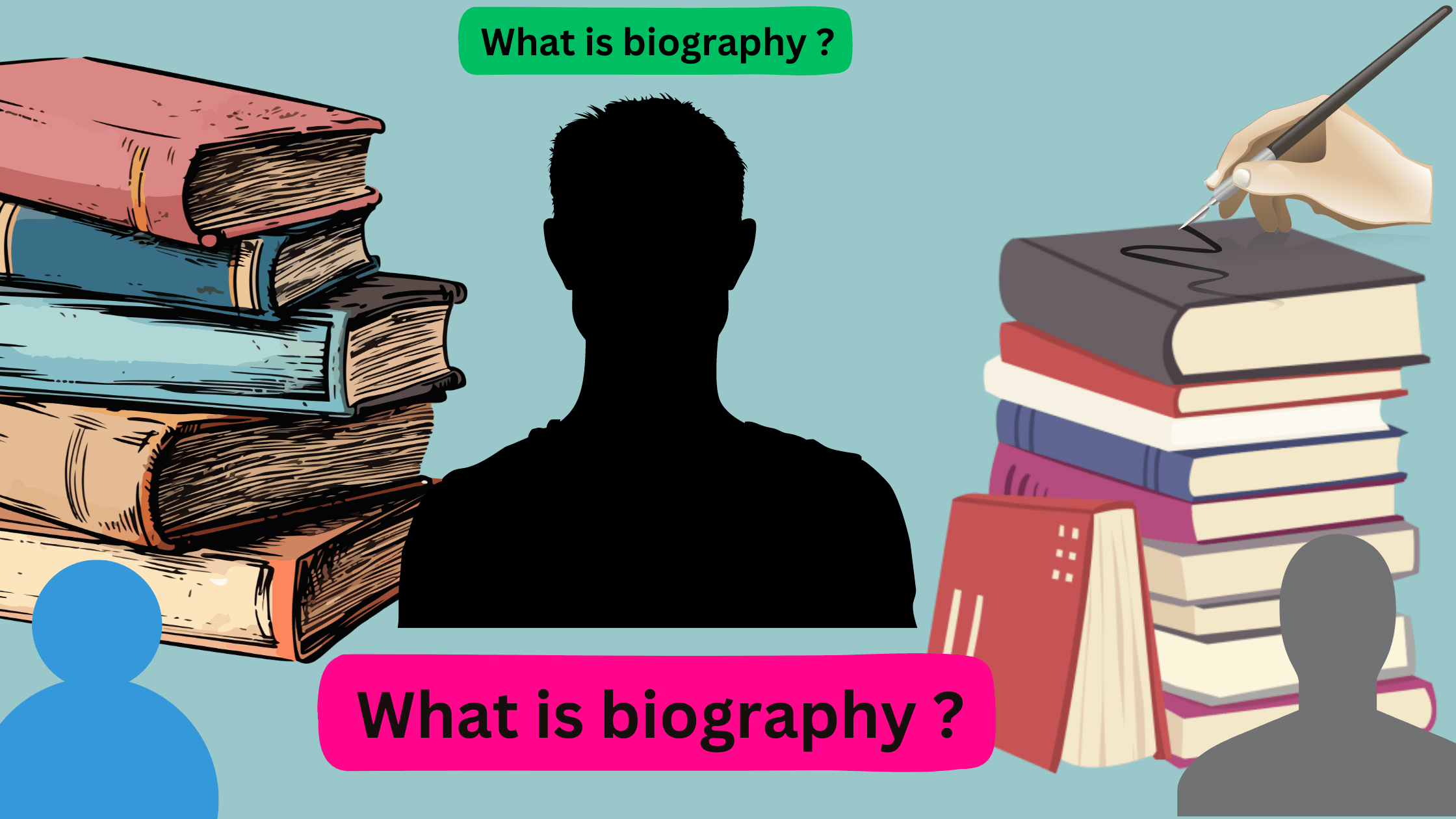Tips for Writing Engaging Biographies
When it comes to writing biographies, capturing the essence of a person’s life in an engaging and captivating manner is key. Whether you’re writing a biography for a client, an organization, or for yourself, there are certain tips and techniques that can help you craft a compelling narrative that will resonate with readers.
In this article, we will explore some valuable tips for writing engaging biographies. From conducting thorough research to creating a captivating narrative structure, you’ll discover how to bring a biography to life and make it a compelling read. We’ll also delve into the importance of selecting the right tone and voice to truly capture the essence of the individual you’re writing about.
With these tips in your arsenal, you’ll be able to create biographies that grab the reader’s attention from the very first sentence and keep them hooked until the very end. So, whether you’re an aspiring biographer or simply looking to improve your writing skills, stay tuned for some expert advice on crafting engaging biographies.
Understanding the purpose of a biography
When it comes to writing a biography, it’s essential to first understand the purpose and goal of the piece. Biographies can serve a variety of purposes, from honoring the life of a renowned historical figure to providing an intimate portrait of a lesser-known individual. Regardless of the subject, the primary aim of a biography is to offer readers a comprehensive and engaging account of a person’s life, achievements, and impact.
Understanding the specific purpose of the biography you’re writing will help you determine the appropriate tone, focus, and narrative structure to adopt. For instance, a biography written for a historical society may require a more formal and academic tone, while a biography written for a general audience may benefit from a more conversational and relatable approach.
Moreover, the purpose of the biography will also influence the level of detail and emphasis you place on various aspects of the subject’s life. If the goal is to highlight the individual’s professional accomplishments, you may choose to devote more attention to their career trajectory and significant achievements. Conversely, if the aim is to provide a more personal and intimate portrait, you may delve deeper into the subject’s personal relationships, struggles, and formative experiences.
Researching the subject of the biography
Thorough and meticulous research is the foundation of a well-crafted biography. Before you begin writing, it’s crucial to immerse yourself in the life of your subject, gathering as much information as possible from a variety of reliable sources.
Start by conducting a comprehensive literature review, exploring biographies, autobiographies, and any other published works related to your subject. This will give you a solid understanding of the individual’s life, as well as provide valuable insights into their personality, motivations, and experiences.
In addition to published sources, consider reaching out to the subject’s family members, friends, colleagues, and other relevant individuals who can offer firsthand accounts and unique perspectives. These personal interviews can provide a wealth of information that may not be available in written records, allowing you to paint a more nuanced and authentic portrait of the individual.
As you gather information, be sure to take detailed notes and organize your findings in a way that will facilitate the writing process. This may involve creating timelines, compiling relevant quotes and anecdotes, and identifying key themes or turning points in the subject’s life. By taking a methodical approach to your research, you’ll be better equipped to craft a cohesive and compelling biography.
Choosing the right structure for the biography
The structure of a biography can have a significant impact on the overall flow and effectiveness of the narrative. While there is no one-size-fits-all approach, there are several common structures that you can consider when writing a biography.
One popular format is the chronological structure, which presents the subject’s life in a linear, sequential manner. This approach allows the reader to follow the individual’s journey from birth to the present (or the time of their death) and can be particularly effective in highlighting the subject’s personal growth and the evolution of their achievements over time.
Alternatively, you may choose to organize the biography around specific themes or events that were pivotal in the subject’s life. This thematic structure can be useful in emphasizing the subject’s most significant accomplishments, relationships, or challenges, and can help the reader gain a deeper understanding of the individual’s motivations and decision-making processes.
Another option is to adopt a more unconventional approach, such as a nonlinear or episodic structure. This format can be effective in capturing the complexity and nuance of the subject’s life, as it allows you to move back and forth in time, exploring different facets of their experiences and their impact on the broader context.
Regardless of the structure you choose, it’s important to ensure that the narrative flows logically and that each section or chapter seamlessly transitions into the next. By carefully considering the most appropriate structure for your subject and your intended audience, you can create a biography that is both engaging and informative.
Crafting an attention-grabbing opening paragraph
The opening paragraph of a biography is crucial in capturing the reader’s attention and setting the tone for the rest of the narrative. A compelling opening can draw the reader in, pique their curiosity, and compel them to continue reading.
One effective strategy is to start with a thought-provoking or surprising statement that immediately introduces the subject and their significance. This could be a quote, a surprising fact, or a vivid description that immediately establishes the individual’s character and the central themes of the biography.
Alternatively, you may choose to begin with a compelling anecdote or story that provides a glimpse into the subject’s life and experiences. This approach can be particularly effective in creating a sense of intimacy and immediacy, as the reader is immediately immersed in a specific moment or event that helps to establish the subject’s personality and motivations.
Regardless of the approach you choose, it’s important to ensure that the opening paragraph is concise, well-written, and sets the stage for the rest of the biography. By crafting a captivating introduction, you can capture the reader’s attention and encourage them to continue exploring the fascinating life of your subject.
Developing a compelling narrative throughout the biography
Crafting a compelling narrative is essential in keeping the reader engaged throughout the biography. This involves more than simply recounting a series of events or achievements; it requires you to weave a cohesive and engaging story that brings the subject to life and resonates with the reader.
One key aspect of developing a compelling narrative is to identify the central themes or arcs that will guide the biography. These could be themes related to the subject’s personal growth, their pursuit of a particular goal or passion, or the broader societal or historical context in which they lived. By focusing on these central themes, you can create a narrative that is both informative and emotionally resonant.
Additionally, consider incorporating vivid descriptions, dialogue, and sensory details to help the reader visualize the events and experiences you’re describing. This can help to create a sense of immediacy and immersion, making the subject’s life feel more tangible and relatable.
Throughout the narrative, it’s also important to strike a balance between providing factual information and crafting a compelling story. Avoid getting bogged down in excessive details or dry, academic language, and instead focus on weaving together the most salient and engaging aspects of the subject’s life.
By developing a cohesive and compelling narrative, you can guide the reader through the subject’s life in a way that is both informative and emotionally impactful, leaving a lasting impression and inspiring the reader to continue exploring the individual’s story.
Incorporating relevant anecdotes and stories
Anecdotes and personal stories can be powerful tools in bringing a biography to life and making the subject more relatable to the reader. By incorporating these elements, you can humanize the individual, provide insights into their personality and experiences, and create a more engaging and memorable narrative.
When selecting which anecdotes and stories to include, consider those that best capture the essence of the subject, highlight their unique qualities, or illustrate pivotal moments in their life. These could be stories that showcase the subject’s humor, resilience, or compassion, or that provide a glimpse into their personal relationships and daily routines.
In addition to providing a more intimate portrait of the subject, well-chosen anecdotes and stories can also serve to illustrate broader themes or historical contexts that are relevant to the biography. For example, a story about the subject’s childhood experiences during a significant historical event can help the reader better understand the social and political climate of the time.
When incorporating these elements, be mindful of striking the right balance between providing factual information and creating a compelling narrative. Avoid overwhelming the reader with too many stories or anecdotes, and instead focus on selecting those that are most impactful and relevant to the overall themes and goals of the biography.
By skillfully weaving in these personal touches, you can create a biography that is not only informative but also engaging and memorable, leaving a lasting impression on the reader.
Showcasing the subject’s achievements and impact
One of the key objectives of a biography is to highlight the subject’s most significant achievements and their lasting impact on the world around them. Whether the individual was a renowned historical figure, a groundbreaking innovator, or a lesser-known community leader, it’s important to ensure that their accomplishments and contributions are given the appropriate attention and emphasis.
When showcasing the subject’s achievements, consider not only their professional or academic accomplishments but also their personal and philanthropic endeavors. Highlight the ways in which the individual’s work, ideas, or actions have influenced or transformed the lives of others, whether on a local, national, or global scale.
It’s also important to provide context and perspective when discussing the subject’s achievements, helping the reader to understand the significance and impact of their work within the broader historical, social, or cultural landscape. This may involve drawing connections between the subject’s accomplishments and the larger trends or events of the time period, or exploring the lasting legacy and influence of their contributions.
By striking the right balance between factual information and compelling storytelling, you can create a biography that not only educates the reader but also inspires them to learn more about the subject and their enduring impact. This can be particularly impactful when the subject’s achievements or influence may not be widely known or appreciated, allowing you to shine a spotlight on their remarkable life and legacy.
Adding personal touches to make the biography relatable
In addition to showcasing the subject’s achievements and impact, it’s important to incorporate personal touches that help to make the biography more relatable and engaging for the reader. By providing insights into the subject’s personality, relationships, and everyday experiences, you can create a more intimate and compelling portrait that resonates with the reader on a deeper level.
One effective way to add personal touches is to include quotes or excerpts from the subject’s own writings, speeches, or interviews. These firsthand accounts can provide valuable insights into the individual’s thoughts, emotions, and motivations, allowing the reader to connect with the subject on a more personal level.
You can also incorporate details about the subject’s hobbies, interests, and personal relationships, highlighting the ways in which these aspects of their life informed their worldview and decision-making. Anecdotes about the subject’s interactions with family members, friends, or colleagues can be particularly illuminating, as they can reveal the individual’s character, values, and the impact they had on those around them.
Additionally, consider incorporating sensory details and vivid descriptions that help to transport the reader into the subject’s world. This could involve describing the sights, sounds, and smells of the subject’s surroundings, or highlighting the emotional experiences and personal reflections that shaped their life journey.
By incorporating these personal touches, you can create a biography that is not only informative but also deeply relatable and engaging. This can help to foster a stronger connection between the reader and the subject, ultimately leaving a lasting impression and inspiring the reader to continue exploring the individual’s remarkable life and legacy.
Editing and proofreading the biography for clarity and cohesiveness
The final step in crafting an engaging biography is to carefully edit and proofread the manuscript to ensure that it is clear, cohesive, and free of errors. This process is essential in polishing the narrative and ensuring that the reader’s experience is seamless and enjoyable.
Begin by reviewing the overall structure and flow of the biography, ensuring that the narrative arc is logical and that each section or chapter transitions smoothly into the next. Look for any areas where the pacing feels uneven or where the focus may have strayed from the central themes or objectives of the biography.
Next, closely examine the language and writing style, paying attention to the tone, word choice, and sentence structure. Strive for a consistent and engaging voice that effectively captures the essence of the subject and resonates with the intended audience. Identify any areas where the writing may be overly technical, convoluted, or lacking in clarity, and make the necessary revisions to improve readability.
In addition to reviewing the overall structure and language, carefully proofread the manuscript to catch any spelling, grammar, or punctuation errors. These types of mistakes can be distracting for the reader and undermine the credibility of the biography. Enlisting the help of a trusted editor or proofreader can be particularly valuable in ensuring that the final product is polished and error-free.
By taking the time to carefully edit and proofread the biography, you can ensure that the final product is a cohesive, engaging, and polished narrative that effectively captures the essence of your subject and leaves a lasting impression on the reader.


